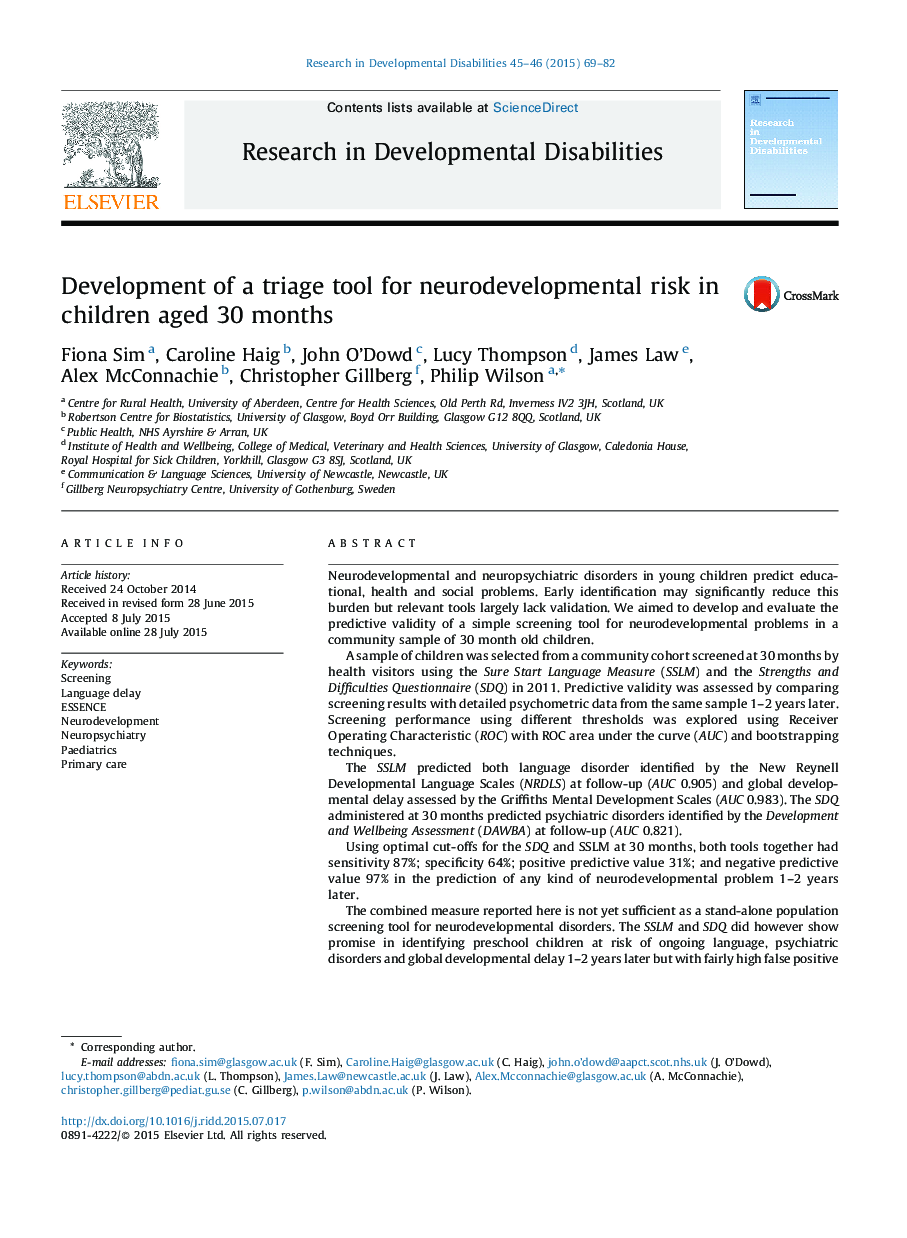| کد مقاله | کد نشریه | سال انتشار | مقاله انگلیسی | نسخه تمام متن |
|---|---|---|---|---|
| 371159 | 621900 | 2015 | 14 صفحه PDF | دانلود رایگان |
• Predictive validity of simple neurodevelopmental screening tools was evaluated in 30 month-olds.
• Screening results were compared with detailed assessments 1–2 years later.
• The tools identified children at low risk of language and psychiatric disorders well.
• The combined tool had sensitivity 87%, specificity 64%, PPV 31% and NPV 97%.
Neurodevelopmental and neuropsychiatric disorders in young children predict educational, health and social problems. Early identification may significantly reduce this burden but relevant tools largely lack validation. We aimed to develop and evaluate the predictive validity of a simple screening tool for neurodevelopmental problems in a community sample of 30 month old children.A sample of children was selected from a community cohort screened at 30 months by health visitors using the Sure Start Language Measure (SSLM) and the Strengths and Difficulties Questionnaire (SDQ) in 2011. Predictive validity was assessed by comparing screening results with detailed psychometric data from the same sample 1–2 years later. Screening performance using different thresholds was explored using Receiver Operating Characteristic (ROC) with ROC area under the curve (AUC) and bootstrapping techniques.The SSLM predicted both language disorder identified by the New Reynell Developmental Language Scales (NRDLS) at follow-up (AUC 0.905) and global developmental delay assessed by the Griffiths Mental Development Scales (AUC 0.983). The SDQ administered at 30 months predicted psychiatric disorders identified by the Development and Wellbeing Assessment (DAWBA) at follow-up (AUC 0.821).Using optimal cut-offs for the SDQ and SSLM at 30 months, both tools together had sensitivity 87%; specificity 64%; positive predictive value 31%; and negative predictive value 97% in the prediction of any kind of neurodevelopmental problem 1–2 years later.The combined measure reported here is not yet sufficient as a stand-alone population screening tool for neurodevelopmental disorders. The SSLM and SDQ did however show promise in identifying preschool children at risk of ongoing language, psychiatric disorders and global developmental delay 1–2 years later but with fairly high false positive rates. Given that current developmental risk prediction in resource-poor settings is little better than random assignment, the SDQ and SSLM may aid clinical judgement when used as interim triage tools for practitioners with no specialist knowledge, in the context of longitudinal follow-up arrangements.
Journal: Research in Developmental Disabilities - Volumes 45–46, October–November 2015, Pages 69–82
